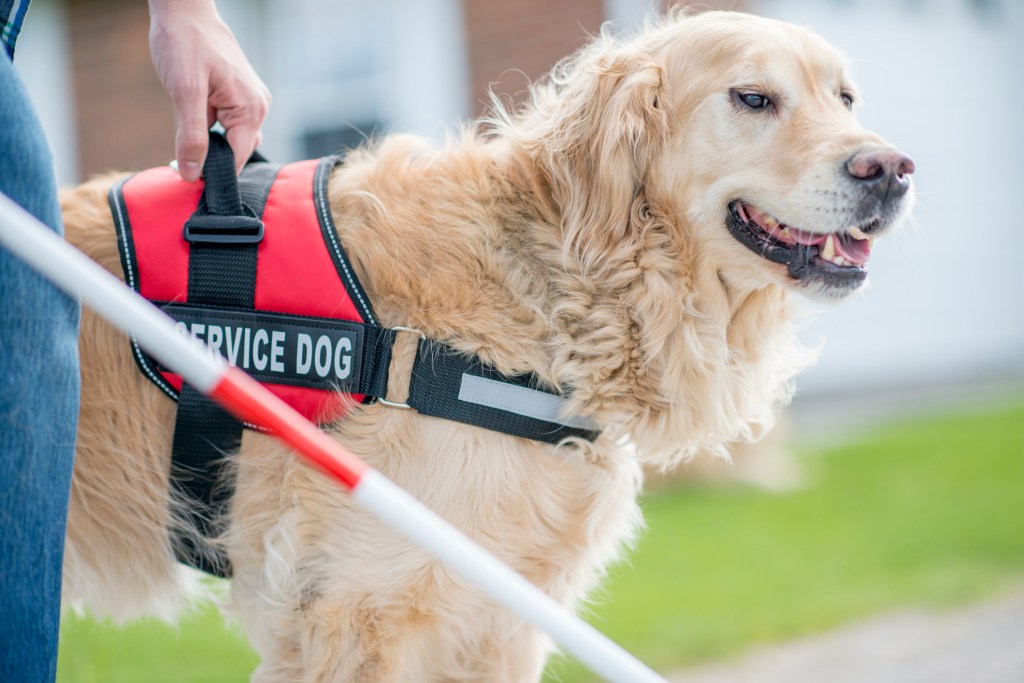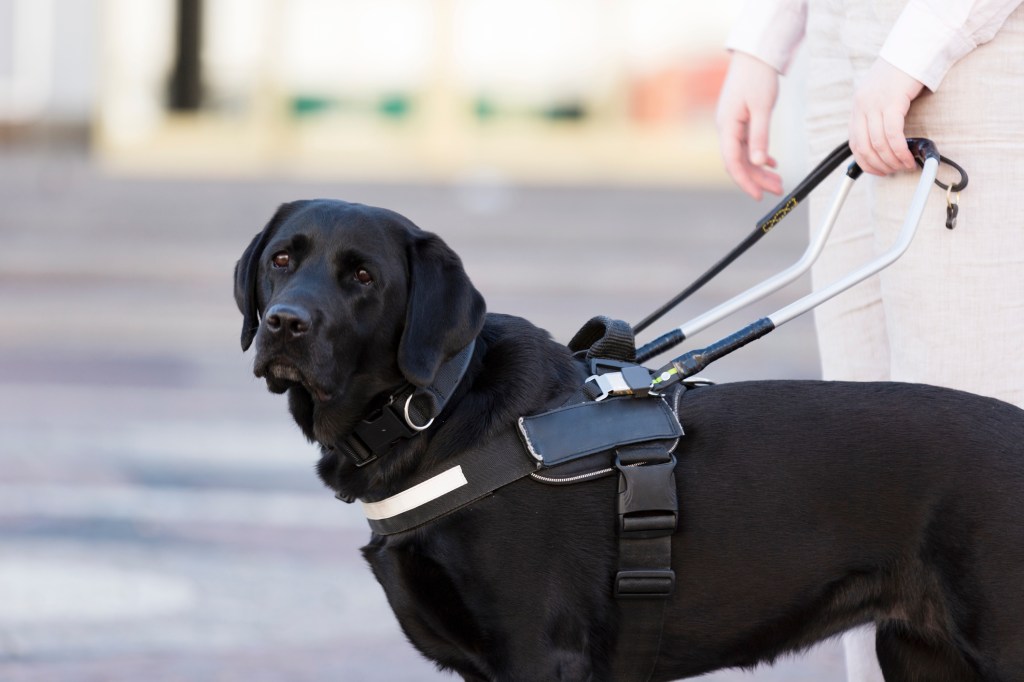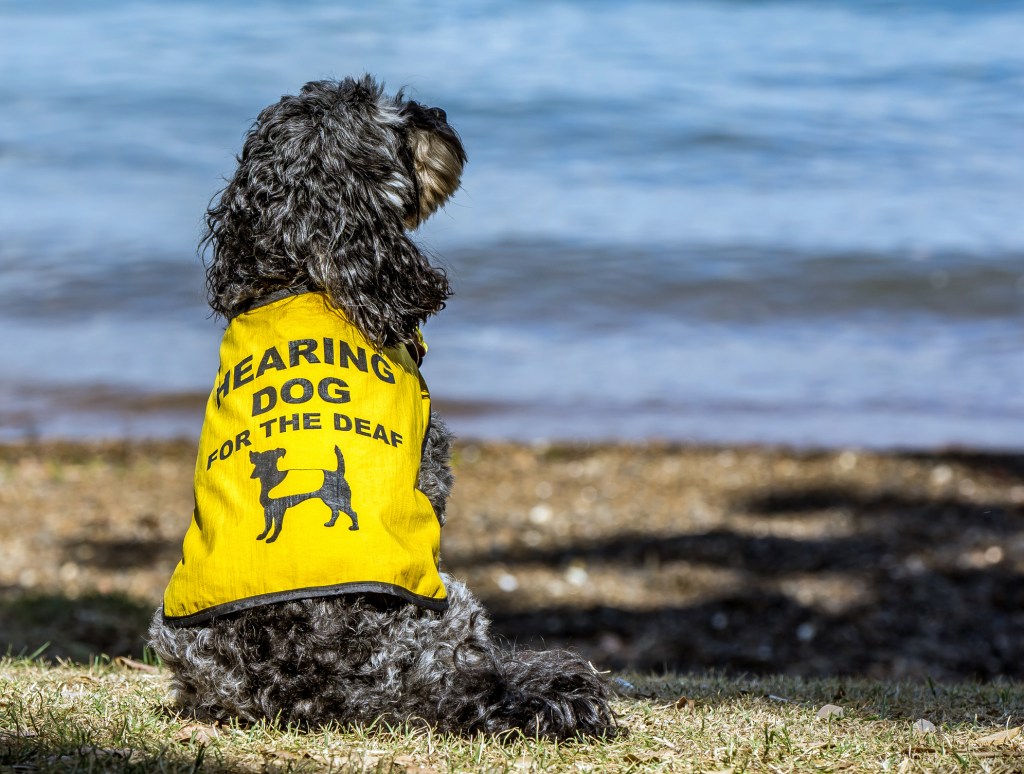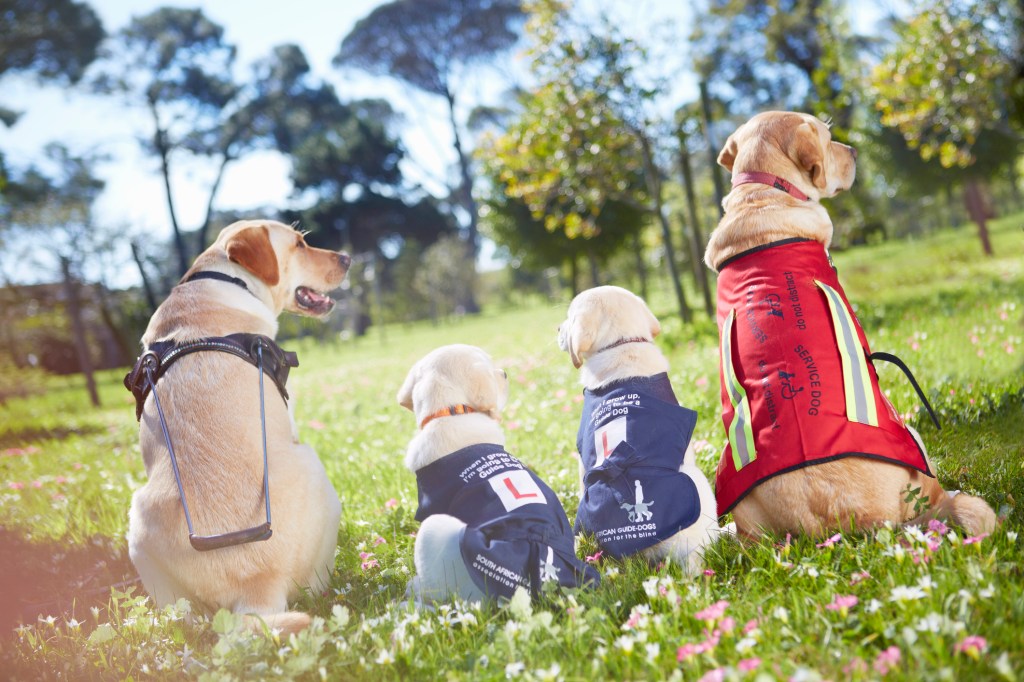Also known as assistance dogs, service dogs make a big difference in the lives of people with disabilities. Likely, you’re already familiar with service animals, thanks to the rising spotlight on these heroic canine companions. You may be less acquainted with the different types of service dogs, all of whom perform unique tasks to help their human handlers. Learn more about guide dogs, psychiatric service dogs, mobility assistance animals, and other types of canines with important jobs below.

Table of contents
- What different types of service dogs are there?
- Types of service dogs
- What is the most common type of service dog?
- What’s the difference between an emotional support dog and a service dog?
- How do you get a service dog?
- How do you register your service dog?
- Can someone ask me for papers on my service dog?
- Are service dogs allowed everywhere?
- Which dog breeds cannot be service animals?
- Service dog training
- How much do service dogs cost?
What different types of service dogs are there?
According to the Americans with Disabilities Act (ADA), disabilities can be mental, physical, sensory, intellectual, and psychiatric. Given this diversity in disabilities, it would only make sense for highly trained dogs to be able to perform tasks that fit these unique needs. As a result, these dogs undergo specialized training to prepare them for their incredibly valuable roles. These dogs adeptly assist their handlers in situations that could otherwise be overwhelming or even impossible, empowering them to lead lives that are more independent and fulfilling.
Types of service dogs
Various types of service dogs are specifically trained to assist individuals with diverse disabilities. Each type of service dog possesses unique skills that contribute to their exceptional value in aiding those they serve.
Guide dogs

The most commonly recognized service dog may be a guide dog. These service dogs aid those who are blind or visually impaired. They typically wear a harness with a handle for their human companion to hold. Oftentimes, their handlers may also be using a white cane.
Guide dogs practice what’s called selective or intelligent disobedience. For example, the dog will resist if a handler gives the “forward” command, but it is unsafe to cross the street. Guide dogs use their risk assessment to make decisions that help keep their handler safe.
Due to their calm demeanor and level of intelligence, German Shepherds, Golden Retrievers, and Labrador Retrievers commonly work as guide dogs.
Allergy detection dogs
Allergy detection service dogs are trained to alert their handlers to the presence of allergens such as peanuts, shellfish, or gluten. Some people are incredibly sensitive to even the smallest amounts of an allergen. Peanut allergies, for example, can cause people to go into anaphylactic shock. Unlike food intolerance, food allergies may be fatal. Allergy detection dogs pick up the scent of an allergen, alerting their owner to its presence.
Often, these service dogs are paired with children. Because they are still learning about their allergies, children may unknowingly eat food that contains a harmful allergen. Due to their age and level of immunity, children are also more prone to severe allergies than adults. As such, allergy detection dogs allow children to maintain their freedom. At the same time, they provide parents with reassurance regarding their children’s safety. Allergen dogs can accompany children to school or social gatherings where parents may not be present to monitor their diet.
Hearing dogs

Like other service dogs, hearing dogs help give independence to their hard-of-hearing or deaf human partners. They can alert their handler to a variety of noises or sound cues. This might include alarms, a knock at the door, phones, traffic hazards, or even their own name. Common hearing dog breeds include Cocker Spaniels, Golden Retrievers, Poodles, and Labradors.
Psychiatric service dogs
Psychiatric service dogs are trained to help people who suffer from mental health disorders or learning disabilities. This may include psychiatric disorders such as depression, schizophrenia, anxiety, autism, and post-traumatic stress disorder (PTSD). In particular, these service dogs are often trained to assist veterans. These dogs are able to sense if their owner may soon experience negative symptoms from their disorder, including panic attacks or flashback episodes.
In response to oncoming episodes, psychiatric service dogs may perform “grounding” tasks to bring their handler back to reality. This can include pawing, licking, or rubbing. They can also help determine what is real from imaginary as in the case of hallucinations or perform simple tasks like turning off a light to help with sensory overload. These are only a few examples of the many ways these dogs can help reduce the stress of a mental health episode.
It is important to remember that while these dogs offer invaluable emotional support, they differ from emotional support dogs. These service companions undergo specialized training and are not considered pets.
Mobility assistance dogs

People with physical disabilities can require aid from mobility assistance dogs. With a physical disability, daily tasks can be difficult or even impossible. This type of service dog may offer assistance by opening doors, pressing automatic buttons, or retrieving objects. They can also turn on lights or carry objects. People with spinal cord injuries, brain injuries, multiple sclerosis, or muscular dystrophy, as well as wheelchair users, may benefit from a partnership with a mobility assistance service dog.
Autism service dogs
Autism spectrum disorder (ASD), or autism, is a behavioral or developmental disorder. Difficulty with social skills, nonverbal communication, and speech can all be characteristics of ASD. Autistic people often struggle to maintain relationships or friendships. Moreover, many experience difficulty with self-regulation, change or non-adherence to routines, and aversions to certain sensory stimuli.
Occasionally, health professionals pair service dogs with children with autism. They can help children navigate behavioral challenges and connect in social settings. Often, people with autism may have difficulty communicating with their peers. As a result, they may feel overwhelmed in social situations. This type of service dog helps children connect with their classmates, allowing for increased skills in communication and reduced anxiety.
Additionally, autism service dogs can prevent children with autism from running away. These dogs can track and locate children in this event. They may also alert the child’s parents to potentially dangerous situations.
Seizure-alert dogs
These medical service dogs assist individuals before, during, and after an episode. Seizure alert dogs can be trained to assist people with epilepsy. They may find help for their person by calling 911 on a K-9 alert phone. In addition, they can move the person if the seizure occurs somewhere that is unsafe. What’s more, seizure-alert dogs also use pressure to end a seizure early.
There are contradicting perspectives on the validity of seizure alert dogs. Many scientists and health professionals believe dogs can be trained to alert owners of episodes. Conversely, others think the gift of seizure detection lies in their instinct alone.
Diabetic service dogs
Diabetic alert dogs inform their partner of blood sugar highs and lows, which can pose a serious health hazard. In severe cases, this can sometimes be fatal. Because of the dog’s alert, the diabetic person can test their blood sugar level for indications of danger.
These service dogs inform others if their handler needs medical assistance. Some are even trained to call 911 on a special K-9 phone if the person is at home alone. Often, these dogs wear a vest containing their handler’s medical information so first responders know how to aid in an emergency.
What is the most common type of service dog?

The most prevalent type of service dog is the guide dog, also known as a seeing eye dog. These dogs are trained to assist visually impaired or blind individuals, aiding them in safely navigating their surroundings.
Two notably renowned guide dogs were Salty and Roselle, both heroic Labradors. On September 11, 2001, Salty and Roselle assisted their handlers in descending over 70 stories of World Trade Center Tower One before its collapse. Guiding Eyes for The Blind, a New York-based nonprofit organization that trains seeing eye dogs, provided training for Salty in the late 1990s.
What’s the difference between an emotional support dog and a service dog?
Unlike service dogs, who are trained to assist with specific disabilities and associated symptoms, emotional support animals provide therapeutic benefits simply through their presence. While the soothing effect they offer is beneficial, they are fundamentally different from service dogs and do not receive the same legal protections under the ADA. Even so, ESAs do have certain protections under the Fair Housing Act.
How do you get a service dog?
To qualify for a service dog, you must meet the ADA’s criteria for a physical or mental disability. Additionally, you need documentation from a medical professional stating that assistance from a service animal could significantly enhance your quality of life. Since the ADA doesn’t specify every eligible disability for a service dog, it’s essential to consult with your doctor or mental health professional if you believe a service animal could benefit you.
How do you register your service dog?
Be cautious of online organizations selling certificates of service dog registration. This differs from organizations that help with obtaining an emotional support animal letter online. It is very important to understand there is no legal requirement to register your service dog. These documents are not required by the ADA or the Department of Justice. Furthermore, your state cannot require service animal certification or registration. However, service dogs are required to be licensed and vaccinated in the same way as other pets.
Can someone ask me for papers on my service dog?
No one is permitted to request documentation regarding the validity of your service dog. Furthermore, individuals may not request information about your disability or ask for proof that your service dog can perform their tasks.
Are service dogs allowed everywhere?

Unlike emotional support animals, the ADA mandates public access for service dogs. They are allowed entry into establishments that are ordinarily prohibited to pets. This includes restaurants, museums, and public transportation. Airlines, however, are an exception to this public mandate. In 2022, the U.S. Department of Transportation (DOT) revised its regulations concerning service animals on airplanes. Airlines must still accommodate service animals for travel to, within, and from the United States.
Can an airline deny a service dog to board a plane for a flight?
However, there are limited cases where airlines may refuse transportation if the service animal presents a health or safety risk. These situations involve an animal who acts aggressively or is perceived as posing a danger to other passengers, is physically too large for cabin travel, or is in violation of health regulations and ordinances. Service dogs who engage in disruptive behavior are also not permitted on flights. If the airline requires certain DOT forms and the passenger has not completed those documents, then the service animal can be refused entry to the aircraft as well.
Which dog breeds cannot be service animals?
Service dogs are not restricted to specific breeds. Any dog breed can serve as a service animal as long as they can effectively perform tasks related to the disability they are assisting with.
Service dog training

The Americans with Disabilities Act (ADA) does not require professional training for service dogs, nor does it establish a certification process for them. Under ADA guidelines, individuals with disabilities have the freedom to train their service dogs themselves. This provision enables a more personalized and customized training experience, allowing handlers to address their specific disability-related needs and tasks.
According to the ADA, service dogs must complete training that allows them to perform tasks that aid with a handler’s disability. Moreover, they must always be under the control of their handlers. In addition to these requirements, the handler should be able to answer questions regarding their dog’s ability to assist. While service dogs are often recognized with special tags or harnesses, this is optional. That said, people often choose to include vests or tags with important medical information on their service dogs.
How much do service dogs cost?
Because service dog training is rigorous, it may take over two years to complete. Although there is no official standardized training for service dogs, many opt for professional trainers. Professional training for different types of service dogs can often cost upwards of $30,000. Unfortunately, health insurance plans generally do not cover the cost of training or acquiring service dogs. However, if you qualify for Social Security Disability Income (SSDI), a portion of these payments can be allocated to cover expenses.
Some nonprofit organizations also work to pair people with service dogs for free or at a low cost. If you’re interested in being paired with a service dog, you may be able to find an organization that can work with your needs.









